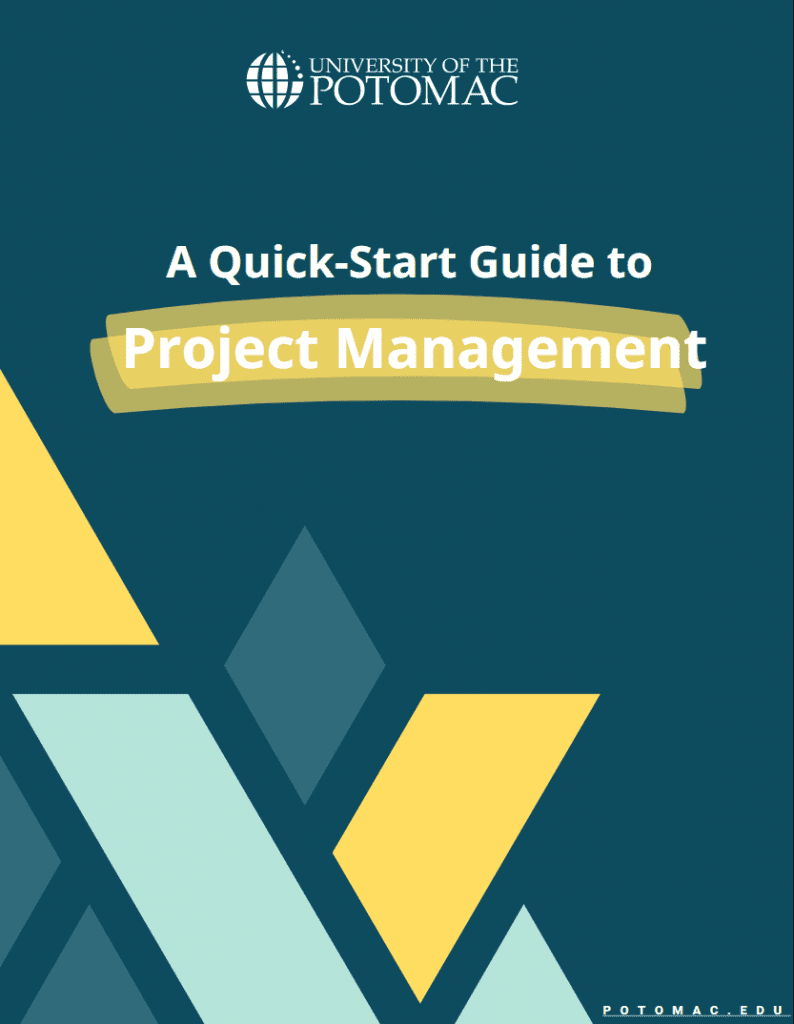All good projects begin as good ideas that take time, investment, excellent planning, and great effort in order to reach success. However, not every project turns into a success, and a significant reason why is the lack of understanding as well as properly defining the project scope from the very beginning. If you are in a position that requires you to lead the work of a team in order to achieve the agreed-upon goals of a particular project, then you will need to be better informed regarding the scope, time, budget, and other principle aspects of project management.
Once the scope of a project is defined and managed correctly, the project can result in the delivery of quality products or services in agreement with the cost and specified schedules of stakeholders. So, what is scope in project management? What is the first step in developing the project scope management plan? What does the whole process involve, and why is it all so important? For answers to these questions and much more, continue reading as we delve deeper into scope management and the higher possibility of project success.
FREE RESOURCE

Download Our Free Quick-Start Guide to Project Management Now!
What Is Scope In Project Management?
Scope in project management is a critical part of the planning process as it helps set the boundaries of what should and shouldn’t be part of the project work. Such a step is also essential for project budgets and schedules.
This term is often associated with the scope of the product too. However, the two are different systems within the project system, as the product scope is considered a subset of the project scope. Furthermore, the product scope is more focused on the attributes and characteristics of the deliverables in the project creation, which is only one part of the overall project.
What Is a Project Scope Statement?
As you deal with the management side of a project, you must carefully consider the work you and your team must do to deliver the project on time and within the set budget. Therefore, you need a project scope statement that provides a thorough and detailed description of all the planned work and objectives that must be accomplished by the end of it.
Of course, as you and your team begin to work on the project, problems might arise that require you to change specific deliverables that you initially included in the project scope statement. However, the critical part is that the fundamental objective of the project should not change. Instead, finding new and improved ways that help guide your team toward the ultimate goal presented in the statement would be best.
Writing a project scope statement
When writing a project scope statement, begin by listing all the project’s stakeholders, their boundaries of the project, and most importantly, what you and the team believe the primary objective should be. You should also pay close attention to the following parts that are often included in such a document:
- An overall description of the work that helps state what the project is about.
- A detailed list of all the deliverables, including what you will be producing, its key features, and the materials used.
- A justification for the project that helps the team and stakeholders understand why the project was initiated in the first place.
- Detailed definitions of any possible constraints that might be a source of risk as the project progresses.
Why Is Defining a Project’s Scope Important?

Defining a project’s scope is one of the essential steps in project management as it helps manage the expectations of the clients and stakeholders; therefore, you, your team, the people investing in the project, and those that will benefit from it later on, are all on the same page. Furthermore, properly defining and communicating the project scope can help avoid problems like overrunning the budget, being behind schedule, constantly changing requirements or rethinking objectives mid-project, disappointing the clients, and so on.
To put it simply, defining the project scope is important because it often directly affects the project’s success. Statistics show that 52% of projects completed within a year failed due to scope creep. But what is scope creep in project management? Essentially, scope creep refers to adding features, functions, and overall unauthorized work that extends beyond the agreed-upon scope. So, unless you are thorough and detailed when defining the scope of your project, chances are that even when finding solutions to problems, if you didn’t somehow account for them in the original scope, you will face failure in the end.
How to define a project’s scope
To define a project’s scope, you must first outline the project objectives, including all the assets you plan to deliver by the end of the project, as well as a resource management plan that lists all the resources available to you and your team. Then, you continue drafting the project’s scope statement, introduce it to the project stakeholders, and, if needed, change parts of your scope statement to match any requirements they might have. Make sure to consult your team throughout the whole process of defining your project’s scope, and in the end, present it all to your team so it can act as a helpful reference that keeps everything on track.
What Is Involved In Project Scope Management?

As a project manager in charge of defining and monitoring the project scope, you need to go through various steps in order to manage the scope, including the following:
Planning scope management
The first process in project scope management includes several procedures related to the initial planning and documentation of the project scope, including brainstorming the general idea of how it will be defined, monitored, and managed later.
Planning scope management helps with writing the statement, preventing stakeholder disagreements, scope creep, and any other unnecessary change. This process makes use of various tools and techniques, including meetings and consultations with experts to plan everything.
Interested in pursuing a degree?
Fill out the form and get all admission information you need regarding your chosen program.
This will only take a moment.
Message Received!
Thank you for reaching out to us. We will review your message and get right back to you within 24 hours.
If there is an urgent matter and you need to speak to someone immediately you can call at the following phone number:
- We value your privacy.
Collecting requirements
The following process deals with documenting all the stakeholders’ needs, requirements, and stated intentions in relation to the project’s objectives. As a project manager, you must use various tools and techniques, like focus groups, interviews, surveys, questionnaires, observations, and other means to collect relevant information regarding their requirements.
Once you have gathered sufficient data, you and your team should do an in-depth analysis and list all the additional objectives you must include in the statement to reduce the possibility of disappointment from any side once the project is completed.
Defining scope
As previously mentioned, defining the project’s scope includes preparing a detailed description of the project and its main deliverables. This process ensures that as a project manager, you make a clear point of what the team is supposed to achieve and what to avoid doing.
Thanks to product analysis, facilitated workshops, expert judgment, and other alternative tools and techniques, this step results in a scope that communicates all the expectations for project performance.
Creating the work breakdown structure
Project scope management also includes the work breakdown structure process. This process allows managers and other team members to break down a high-level scope statement with detailed explanations for many project areas into smaller, more manageable units, referred to as work packages. The complete work breakdown structure should consist of a list of all the work packages required to finish the project.
Validating scope
Project scope management also uses validating scope to focus on the customer’s expectations and meeting them. So, essentially, during this process, your team must conduct interviews, surveys, and other inspection forms where customers give feedback on the work performed at the end of each phase. This way, you can better understand how well the project is going and whether or not your customers are satisfied.
Controlling scope
Lastly, the process of controlling scope uses variance analysis in order to monitor the status of the project. Once you measure the work product with the scope baseline, you can ensure that the project is on track and everything is going as planned. This project scope management process also allows you and the team to manage any changes made to the scope and overall project and to assess any additional requirements made by the stakeholders or customers.
Challenges in Scope Management
Scope management in projects presents several challenges that project managers must address to ensure successful project delivery.
Scope creep
One significant challenge is scope creep, which refers to the gradual expansion of project scope beyond its initial boundaries. Scope creep often occurs due to uncontrolled changes, additions, or enhancements to project requirements. To mitigate scope creep, project managers must implement vigilant monitoring, maintain clear communication with stakeholders, and establish strict change control procedures to prevent unauthorized scope changes.
Vague objectives and requirements
Another challenge arises from vague objectives and requirements, leading to misunderstandings, delays, and dissatisfaction among stakeholders. Unclear or ambiguous project objectives and requirements must be thoroughly documented and clarified at the outset to avoid confusion and scope discrepancies later on.
Stakeholder expectations
Conflicting stakeholder expectations also pose a significant challenge in scope management. Different stakeholders may have divergent expectations regarding project scope, priorities, and deliverables. Managing conflicting stakeholder expectations requires active engagement, negotiation, and compromise to reach consensus on project scope and objectives.
Inadequate communication
Inadequate communication among project stakeholders can exacerbate scope-related challenges. Poor communication can lead to misunderstandings, misalignment, and conflicts regarding project scope. Effective communication strategies, including regular updates, stakeholder meetings, and transparent documentation, are essential for ensuring alignment and understanding of project scope.
Training and Skill Development
For project managers seeking to enhance their scope management skills, various resources and opportunities are available.
One option is pursuing Project Management Professional (PMP) Certification offered by the Project Management Institute (PMI). This certification validates proficiency in project management principles, including scope management. PMI also provides specialized courses and resources focusing on scope management techniques.
For project managers working in agile environments, obtaining a Certified ScrumMaster (CSM) Certification can provide valuable insights into agile scope management practices and methodologies.
Online platforms such as Coursera, Udemy, and LinkedIn Learning offer a wide range of online courses and workshops covering project scope management topics. These courses often include interactive lectures,
Many organizations offer internal training programs or mentorship opportunities for employees interested in developing their project management skills. Taking advantage of these resources can provide hands-on experience and guidance from experienced professionals.
Exploring authoritative books and publications on project management and scope management theory and practice can also deepen understanding and provide valuable insights into effective scope management strategies.
The Bottom Line
Every project idea you have might not be a huge success. However, rely on project scopes, properly define them, and combine all the processes involved in project scope management, and you’ll execute everything to the best of your and your team’s abilities.
Project scope management requires effort, time, patience, and extensive planning. But, it is worth the investment, as it will ultimately help you deliver your project with minimal complications.
Frequently Asked Questions (FAQs):
What is scope creep, and how does it impact project management?
Scope creep refers to the gradual expansion of project scope beyond its initial boundaries.
How can project managers prevent scope creep?
Project managers can prevent scope creep by implementing vigilant monitoring, maintaining clear communication with stakeholders, and establishing strict change control procedures. It’s crucial to document project requirements thoroughly and resist unauthorized scope changes.
What are the consequences of inadequate scope definition?
Inadequate scope definition can lead to misunderstandings, delays, and conflicts among project stakeholders. It may result in project budget overruns, missed deadlines, and dissatisfaction among clients or end-users.
Why is effective communication essential in scope management?
Effective communication ensures alignment and understanding of project scope among stakeholders. It helps prevent misunderstandings, misalignment, and conflicts regarding project objectives, requirements, and deliverables.
How can project managers enhance their scope management skills?
Project managers can enhance their scope management skills through professional development opportunities such as obtaining certifications. They can also take advantage of online courses, workshops, and mentorship programs focusing on project scope management techniques and best practices.










